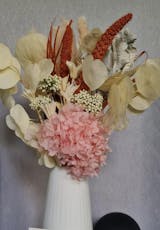Caring for your Sansevieria (Snake Plant or Mother-in-law's Tongue)


Sansevierias, commonly known as the Snake Plant, come in a whole variety of shapes and sizes - there's the black and gold Sansevieria, Sansevieria Moonshine, Sansevieria Futura Superba, Sansevieria Trifasciata Golden Hahnii, Sanseveria Trifasciata, Sansevieria Hahnii Rosette, Sansevieria Bantel’s Sensation... and the list goes on and on. (Scroll to the bottom to check out pictures and their differences!) It's a great way to have a variety in your plant collection if you're a plant beginner as they're very adaptable to a wide range of conditions, and sometimes even thrive in neglect.
While they make great indoor plants, take note that Sansevierias are toxic to pets (and humans) when ingested, likely causing stomach upset or vomiting. However, as long as your pets don't have the tendency to bite your plants, all's good. This is likely why Sansevierias are also called Mother-in-law's Tongue!

Sunlight
Sansevierias do best in moderate to bright indirect light. However, they can also tolerate low light conditions and direct sunlight! If ample sunlight is provided, they will grow faster and you'll have to divide them or repot them into larger pots.
Watering
Water your Sansevieria sparingly when the soil is dry, and avoid watering onto its leaves. Make sure your pot has drainage holes!
Over-watering is a common problem amongst Sansevieria owners, and can cause root rot to happen. In fact, over-watering is practically the only thing that will kill a Sansevieria.
Soil medium
Sansevierias prefer sandier, loose and well-draining soil. You can also just go for a cactus potting medium.
Fertiliser
It's not necessary to fertilise your Sansevieria but if you want to give it a treat, you can fertilise it every 6 months with a general plant fertiliser.
Temperature
Sansevierias prefer warmer conditions, but will definitely still do well in your air-conditioned room or office.
Propagating
You can divide Sansevieria easily when repotting, if not emerging new shoots can be taken out and potted independently. You can repot Sansevierias by cutting, but this is a more complicated process that requires multiple steps. You can watch a video on how to propagate them here.
Not all Sansevierias can be propagated by both ways. Variegated ones such as Sansevieria Futura Superba, Sansevieria Trifasciata Golden Hahnii, Sanseveria Trifasciata, Sansevieria Bantel’s Sensation must be propagated by repotting new shoots to preserve their leaf patterns.
While you may want to put them into beautiful pots around your home, it's important to make sure that the pot is strong (Sansevierias have strong roots that can crack weaker pots) and has draining holes. A tip is to pot them into a simple and functional pot before placing them in more decorative holders, such as a Japanese ceramic pot or hand-woven basket.



Troubleshooting
Roots turning mushy, followed by leaves wilting, drooping and turning yellow and mushy: Over-watering which caused root rot! When observed in the leaves, the plant is almost entirely endangered. Once detected, immediately repot and remove affected roots and leaves with clean, sterile tools. If this is not done in time, you may have to salvage via leaf-cutting instead. Sterilise the tools immediately after this is done.
-
Ready to start your plant collection? Check these Sansevierias out:







 Singapore
Singapore
 Japan
Japan
 Australia
Australia
 Malaysia
Malaysia
 Indonesia
Indonesia
 EU
EU










